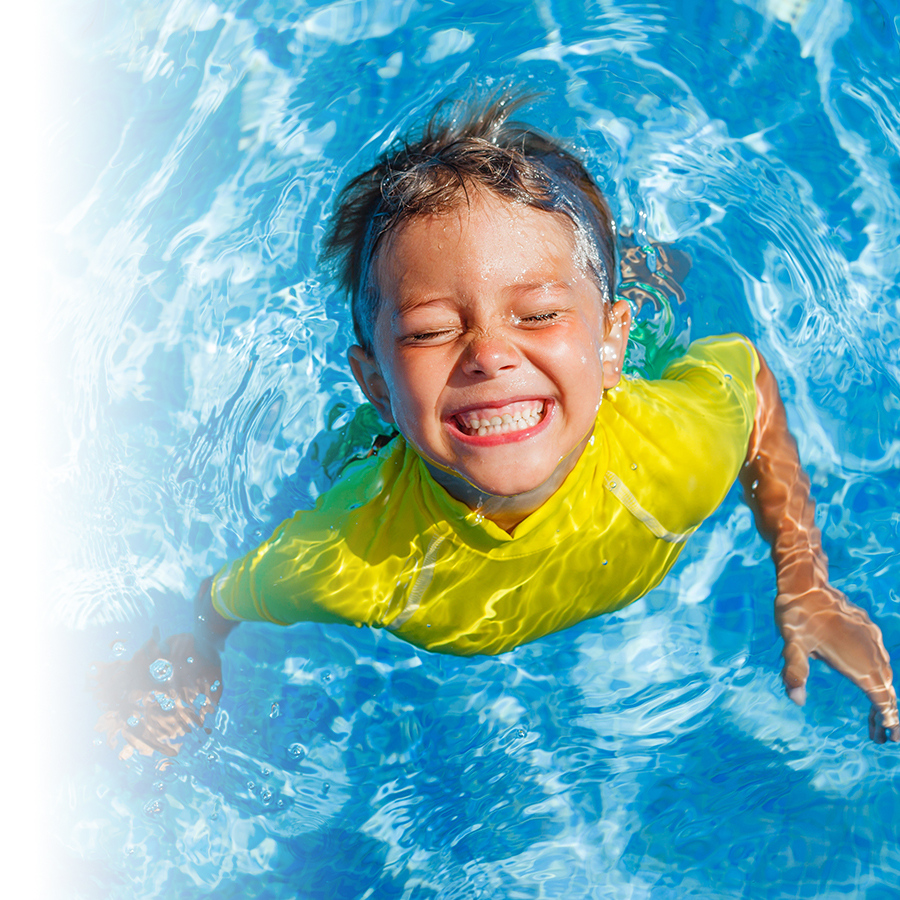Are your family members avid swimmers? Have you heard about swimmer’s ear and the ways to prevent it?
What is swimmer’s ear?
In the summertime, when the weather is hot, what better way for the entire family to cool off than by taking a dip? Unfortunately, this little bit of joy can sometimes bring us some minor inconveniences, and otitis externa, commonly called swimmer's ear, is one of them.
The ear has three main parts: the outer ear, the middle ear and the inner ear. As the name implies, the outer ear is the outer part and includes the pinna and ear canal. At the end of the ear canal is the eardrum, which acts as a barrier between the outer and middle ear.
Otitis externa is an inflammation of the external ear canal that may be caused by an infection. Symptoms may include pain (often exacerbated by pulling on the earlobe), itching and a feeling of a blocked ear. Sometimes pus may leak from the ear canal or hearing may be affected.
This type of ear infection can occur after swimming when moisture builds up in the ear canal, sometimes creating conditions for inflammation and bacteria growth. Swimmer’s ear is the most common and well-known form of otitis externa. In addition to swimming, the use of the following items can promote the development of otitis externa:
- cotton swabs
- ear plugs
- earphones and earbuds
- hearing aids, and
- earwax removal products (ear wax)
Summer is conducive to otitis externa, especially in children who often have the opportunity to go swimming.
How to prevent swimmer’s ear
Here are some tips to prevent swimmer’s ear:
- Make sure you swim in clean water. Polluted water increases the risk of infection. If you swim in a pool, make sure the water is tested daily.
- Consider wearing ear plugs specially designed to protect the ears under water.
- Avoid swimming with your head under water as much as possible.
- Keep your ears dry. After swimming, be sure to drain the water from your ear canals by tilting your head to the side. If you use a towel to blot the outer part of the ear, do it gently.
- Do not use a cotton swab or any other sharp object to clean your ears. Simply clean the auricle (outside) of the ear with water and some mild soap. Remember that it is normal to have some earwax in your ear, as it serves to protect the ear.
How to treat swimmer’s ear
Unlike otitis media, otitis externa is not usually treated with an oral antibiotic. Instead, topical products that are applied to the ear are used. Some of these products are available over-the-counter, while others must be prescribed.
If you want to use antibiotic, anti-inflammatory or other drops to treat otitis externa, note the following:
- Do not use eardrops without first speaking to your doctor or pharmacist.
- Carefully follow their instructions for optimal treatment. Your pharmacist can explain how to apply the ear drops.
- Check to see if the container needs to be shaken before use.
- Do not apply the product if the expiration date has passed or if you do not know how the product was stored.
- Do not insert a cotton ball or tissue in the ear after putting in the eardrops.
- If you develop a fever or other symptoms 48 hours after starting treatment, you should see a doctor.
If you have pain in your ear, an oral pain reliever or anti-inflammatory medication may help. Ask your pharmacist to help you choose the best-suited product for you, taking into account your age, health, medical history and other medications you are taking. Ask your pharmacist to calculate the dosage to be given according to age and weight if the medication is intended for a child.
Speak to your pharmacist for additional information about the prevention or treatment of otitis externa.

